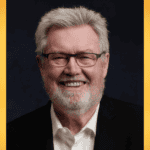Most people don’t think they are creative. From childhood, they’ve been told creativity is a rare, mysterious thing. Teachers tell children “only artists are creative”. It’s described as a ‘right brain’ function. After nearly 20 years of laboratory research, I have concluded that creativity is within everyone’s reach – without exception. In recent years I’ve successfully transferred some lessons of the laboratory into real-life settings. I’ve worked with children, teachers, parents and corporate executives. To unleash your potential, simply master these strategies. They may be all that stands between you and some of the most creative people in history.
New ideas are fleeting, like startled deer streaking across your consciousness. If you don’t grab them quickly, they’re usually gone forever. People who are serious about exploring their creative side have learned ways to heed and preserve their new ideas. They have “idea capturing skills”. Salvador Dali, the great surrealist, used to capture ideas for paintings from the fertile semi-sleep state called hypnagogic. He’d sit in an armchair with a key in one hand and hold it over a plate placed on the floor. When he drifted off to sleep, the sound of the key hitting the plate would wake him. Immediately, he’d sketch the bizarre images he was seeing. We all have incredible perceptual experiences in the moments before we fall fully asleep. Dali simply developed a way to capture some of them. Artists often carry sketchbooks. Inventors and writers carry notepads or laptop computers or make notes on restaurant napkins and concert programmes.
Here’s one simple exercise I’ve developed to persuade people of their creative potential. I call it “capturing a daydream”: Close your eyes. Let your mind wander for a few minutes. Relax and just let your thoughts go without deliberately guiding them. Did you leave the room? Leave the earth? Drift off to the stars? Given enough time and no distractions, everyone sees, hears or experiences things impossible to experience in reality. I’ve conducted this exercise all over the world, including Japan where, perhaps for cultural reasons, few people claim to be creative. But after a few minutes, Japanese audiences report daydreams every bit as rich as Dali’s. Said one man: “I flew to the top of the building next door and saw this building crumble to the ground while I ate a sandwich.” (IBM was located next door. Was the man foretelling the 9/11 disasters?) Capturing ideas is easier in certain settings and at certain times. For some people, the three Bs of creativity bed, bath and bus – are particularly fertile, especially if you keep writing materials handy in those locations. Others like to sit by a stream or spend days in a lonely forest cabin.
Challenging.
One way to accelerate the flow of new ideas is to put yourself in difficult situations where you’re likely to fail. Surprisingly, failure can be a wellspring of creativity – if properly managed. Typically, when we fail to do something, we feel frustrated and most important for creativity – we begin trying out other behaviours. Many ideas compete vigorously, enhancing the creative process. Say you start to turn a doorknob that has always turned easily. But this time it won’t budge. You turn the knob harder. Then you pull it up. You push it down. You wiggle it. Eventually, you get frustrated and charge the door with your shoulder. Then you kick it. You may even shout for help. These efforts – culled from established behaviours – will probably lead to new solutions. Creativity, in short, is not mystical: it’s an extension of what you already know. ‘Ultimate problems’ – that’s open-ended challenges without solutions – can also be used to accelerate creative output.
Do we really want to place ourselves in frustrating situations? Emphatically, yes! If you feel stymied, you’re in the company of the greatest poets, composers and inventors. More likely than not, you’re on the verge of a new idea.With children, friends or colleagues, try spending 15 minutes a week solving one of these: Become a millionaire – in a week. Fix it so you’ll never have to do another household chore. Change your local climate. (And, no, you can’t move to a new town!) Ageing is a drag, so how do you eliminate it? You won’t find solutions, of course, but these unsolvable challenges will stimulate lots of interesting ideas.
Broadening
The more you know and the more diverse your knowledge is, the greater your potential for creative output. In the 1940s Swiss engineer, George de Mestral was returning from the woods when he became annoyed by small burrs attached to his trousers. Through a microscope, he saw small ‘hooks’ on the burrs had grabbed loops of fibre in the cloth. Using his experiences in many fields, de Mestral began to experiment to create artificial hooks and loops. The final product was Velcro. He blended years of training as an engineer with his curiosity about botany. Countless advances were made possible because their creators had experience in diverse fields. If you want to enhance your own creativity, study subjects you know nothing about – and normally don’t want to know about. If you usually read only mystery novels, read a history book. If you usually come home and tune in to a rugby game on TV, turn to the Discovery channel instead. In the car, scan your radio bands for a new and unfamiliar station.
Surroundings
You can enhance your creativity by surrounding yourself with diverse stimuli – and, even more important, by changing those stimuli regularly. Put unusual items on your desk in the morning – a Mickey Mouse hat, pliers, a candle – or rearrange the furniture in your room. Diverse and ever-changing stimuli help promote diverse and ever-changing ideas. How you interact with others is another form of the creative surrounding. Brainstorming, for example, works to some extent because it exposes team participants to multiple stimuli. But it also inhibits creativity by exposing people to disapproval.
In my research, I’ve found that a ‘shifting group’ – one that shifts back and forth from private sessions to team meetings – typically generates twice as many ideas as the brainstorming group. Why? Because creativity is always an individual process. With new creative powers, we’re all better able to solve the little problems that beset us daily. The resulting explosion of ideas and accomplishments could make those of the Renaissance look like a ride on a stationary bicycle.
By Robert Epstein. Reproduced for educational purposes.










